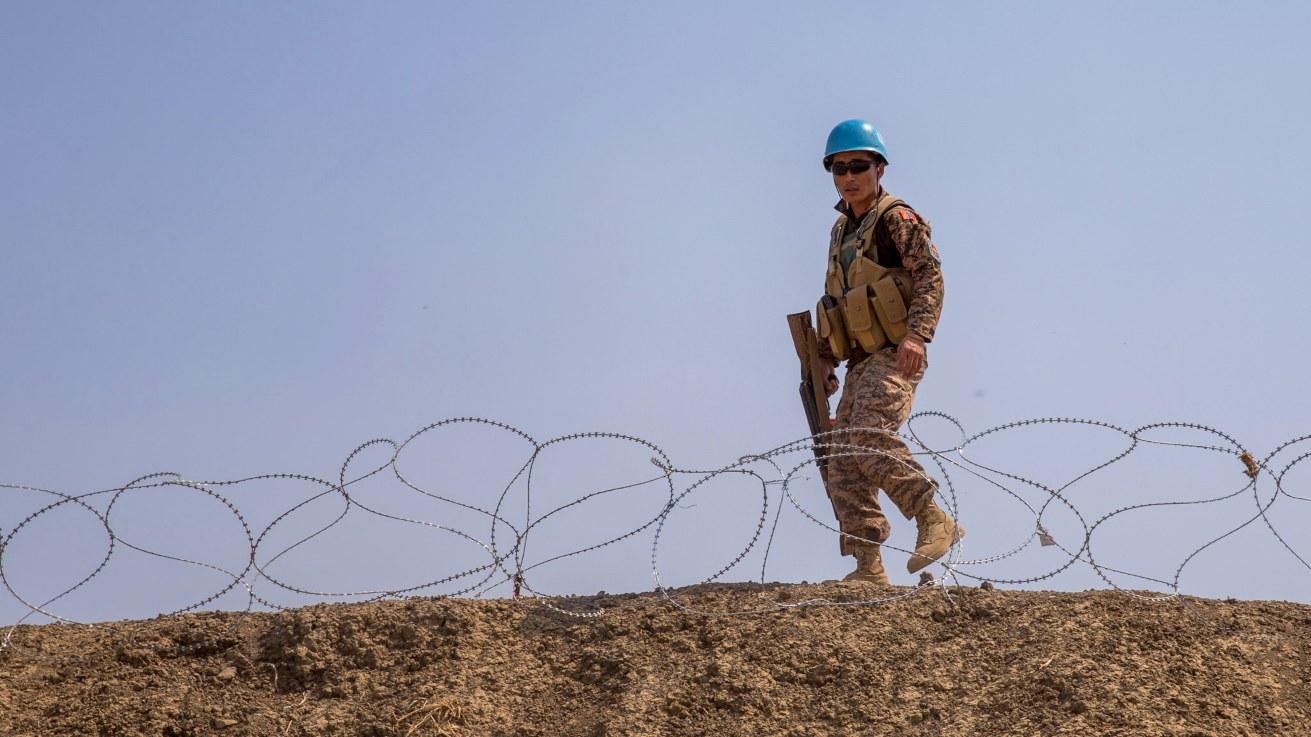The lockdown in South Africa to contain the coronavirus pandemic has exposed inequalities in the country’s childhood education. But did the system work for everybody before? Health concerns have collided with a pre-existing social and economic crisis in which poorer citizens lack access to the same quality of space and services.
‘Education in South Africa is in crisis,’ declared Tshepo Motsepe, General Secretary of Equal Education, a social movement campaigning for ‘quality and equality in South African schools’. Since Lockdown was announced seven weeks ago, there has been much talk of an education crisis in the country, as young people on the economic margins have struggled without the resources to learn from home. But Motsepe was not talking during quarantine. He was speaking in 2017, a year after the government had promised to ensure that all schools in South Africa had access to water and sanitation, a promise that they had broken.
With Lockdown restrictions easing across the country, debates are spiralling over whether schools should reopen, as per the government’s plans, or whether they should remain closed. These debates have ricocheted through our Lockdown Diaries project, which draws together seventy participants from across Cape Town’s informal settlements, occupied buildings, townships and suburbs to reflect on the impacts of COVID-19 on everyday life. Their takes on the ‘back to school’ debate differ, but on one thing they agree: there are no easy answers when two crises collide.
Unequal access to educational resources
‘E-learning was for the middle and upper classes leaving behind the working class to fend for themselves’, writes Ayanda, in Khayelitsha township. While parents across the city are deeply concerned about their children’s education, many do not have the access to devices, data, electricity or stationary to make remote learning a possibility. Even the government’s attempts to make education accessible on the TV and radio has not been enough to bridge the divide of South Africa’s unequal access to resources. Although some schools managed to distribute printed resources, many have been reportedly left without any resources or support.
These resource issues are compounded by the challenge of finding space to study. As our diarists reflect, having enough space to live, let alone learn, remains difficult in the poorer corners of Cape Town. In Ramaphosa settlement, Zizipho writes that those who live in a one-room house with children often find ‘if they need to cook, they have to take children out before they cook’. With public libraries closed, Assie reflects in Khayelitsha, those who ‘live in homes where the environment is not conducive for studying’ are likely to see their grades suffer. Meanwhile, in the affluent suburb of Newlands, Natalie reports that her children are ‘playing board games which will improve their math skills … their computer skills are improving from using Google classroom, they are learning to touch type, and they have kept up with practicing their musical instruments. So I am not worried about them academically.’
Reopening schools a level play-field?
With such obvious disparities at play, there seems to be a clear case for re-opening schools. However, as Motsepe’s quote suggests, those returning to school would not be returning to a level playing field. Public schools in poorer areas will continue to struggle to deliver high quality education and will also find social distancing all but impossible, with overcrowded classrooms and too few teachers. Patsie, who lives in Khayelitsha, writes, ‘in the township [where] schools have more than 40 children in each class, the spread of corona will be too much’. This may not even be the worst case scenario: an Amnesty International team reporting on Gauteng and the Eastern Cape recently witnessed class sizes of up to 70. For Khaya, also in Khayelitsha, the problems stretch beyond the classroom: ‘in public schools they share utilities, bathrooms and even textbooks’, he explains. Meanwhile, social distancing will be more attainable in affluent schools that have better infrastructure and more manageable class sizes.
Nor is it just young people who are at risk due to the return to school. Children may have a low risk of suffering from COVID-19, but protecting the teachers and administration staff in crowded schools will be hard. Travelling to and from school is also a concern, given the difficulty of social distancing on crowded public and learner transport. As Esethu, from Khayelitsha, writes, ‘I believe that the government is gambling with the lives of our siblings because they will have to travel by public transport which on its own is a health risk.’
In short, those currently struggling to learn from home face a risky return to sub-par schooling. But even this may be outside the reach of poorer families. If people’s parents are out of work, reflects Noxy, in Delft, ‘how are they going to feed their families and to pay school fees at the same time?’ While there have been some social security interventions, such as the grant increases, some have argued that they were not good enough and will not effectively alleviate the problems caused by the lockdown. Informal workers may need some time to recover and be able to afford the necessities to send their children back to school.
In Education – as in many sectors of life in South Africa – there are no simple solutions. The same colliding crises that put poorer residents at risk in the crisis also hamper attempts at recovery. When all the spaces and services that poorer citizens can access are marked by the city’s rampant inequality, there is no level foundation on which to build a better tomorrow. Rigorous planning, government assistance and community support can certainly improve the return to schools but, these measures are not likely to improve the government’s capacity to fundamentally rework a system that still favours the wealthy elite and disadvantages the less affluent.
Photo by Ivan Aleksic on Unsplash





The COVID-19 pandemic could be the catalyst for action to address the consequences of inequalities in South Africa’s education system.